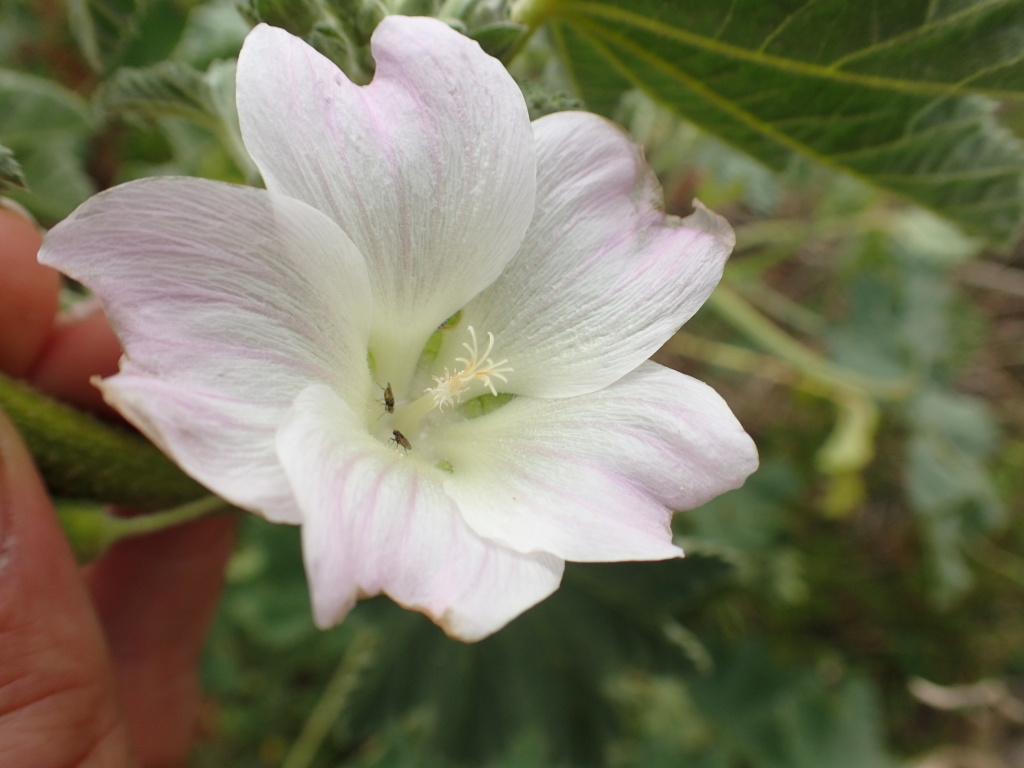Malva preissiana
Miq.Erect, usually short-lived perennial to c. 2 m high. Leaves subentire to palmately 5–9-lobed, the mid-lobe usually longer than others, 2–9 cm long, 2.5–11 cm wide, broadly cordate at base, crenate to dentate, grey-green to dark green, usually paler beneath, sparsely to densely stellate tomentose, both surfaces equally tomentose. Epicalyx lobes ovate, 4–8 mm long at anthesis, not or barely enlarging in fruit; calyx exceeding epicalyx by 3–8 mm at anthesis, enlarging to 9–15 mm long in fruit, the lobes erect or spreading and not or barely concealing mericarps; epicalyx and calyx stellate-pubescent; petals 15–30 mm long, white, greenish basally, often with mauve veins. Fruit 8–11(–14) mm diam., mericarps usually 12–15, usually dorsally reticulate, glabrous, adjacent margins acute to narrowly winged, usually somewhat toothed. Flowers Aug.–Jan(–Mar.).
LoM, MuM, Wim, GleP, Brid, VVP, VRiv, MSB, RobP, MuF, GipP, OtP, WaP, CVU, NIS, EGL, WPro. Uncommon, growing on sand, mainly along the coast from Corner Inlet to Portland. Often in association with areas of high seabird activity.
Previous species concepts included plants widespread throughout inland regions of western Victoria. However, plants from inland sites have long been recognised as distinct, and are now treated as a separate species, M. weinmanniana.
Plants from Portland are distinctly robust and densely tomentose, with grey-green leaves.
 Spinning
SpinningBarker, R.M.; Conran, J.G. (2007). Malva preissiana Miq., an overlooked name for Lavatera plebeia Sims (Malvaceae), with a note on variation within the species. . *Journal of the Adelaide Botanic Gardens * 21: 71–72.
Conran, J.G.; Barker, R.M.; Rippey, E. (2012). Malva weinmanniana (Besser ex Rchb.) Conran, a new name for the pink-flowered form of M. preissiana Schltdl. (Malvaceae). Journal of the Adelaide Botanic Gardens 25: 17–25.



